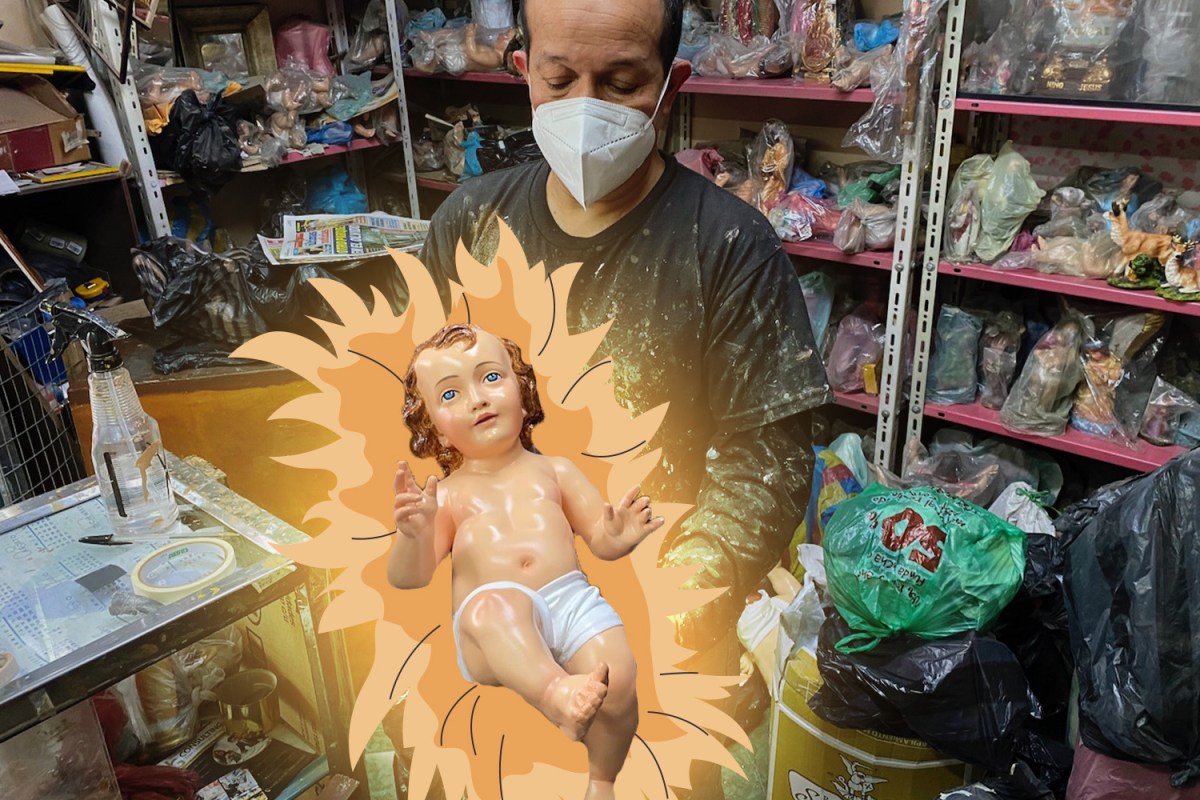If you live anywhere near Quito, Ecuador, and you break your baby Jesus, Gonzalo Carrion is your man.
His small shop looks as though it hasn’t been tidied up since it opened, with countless layers of paint spatters and fragments of damaged figurines and ceramics filling every corner. What does not hide in the corners — displayed prominently on Carrion’s workbench and in his samples case — are countless sculptures of the infant Christ child.
Through an interpreter, Carrion, 68, explains that such religious representations are sacred to Ecuadorians and play an important role in marking family traditions around the Christmas season. If misfortunes fall on a household and their baby Jesus is broken, its owners don’t engage in the modern world’s disposable culture and toddle off to buy a replacement. Rather, they come to Carrion to have their bequeathed religious statuary restored.
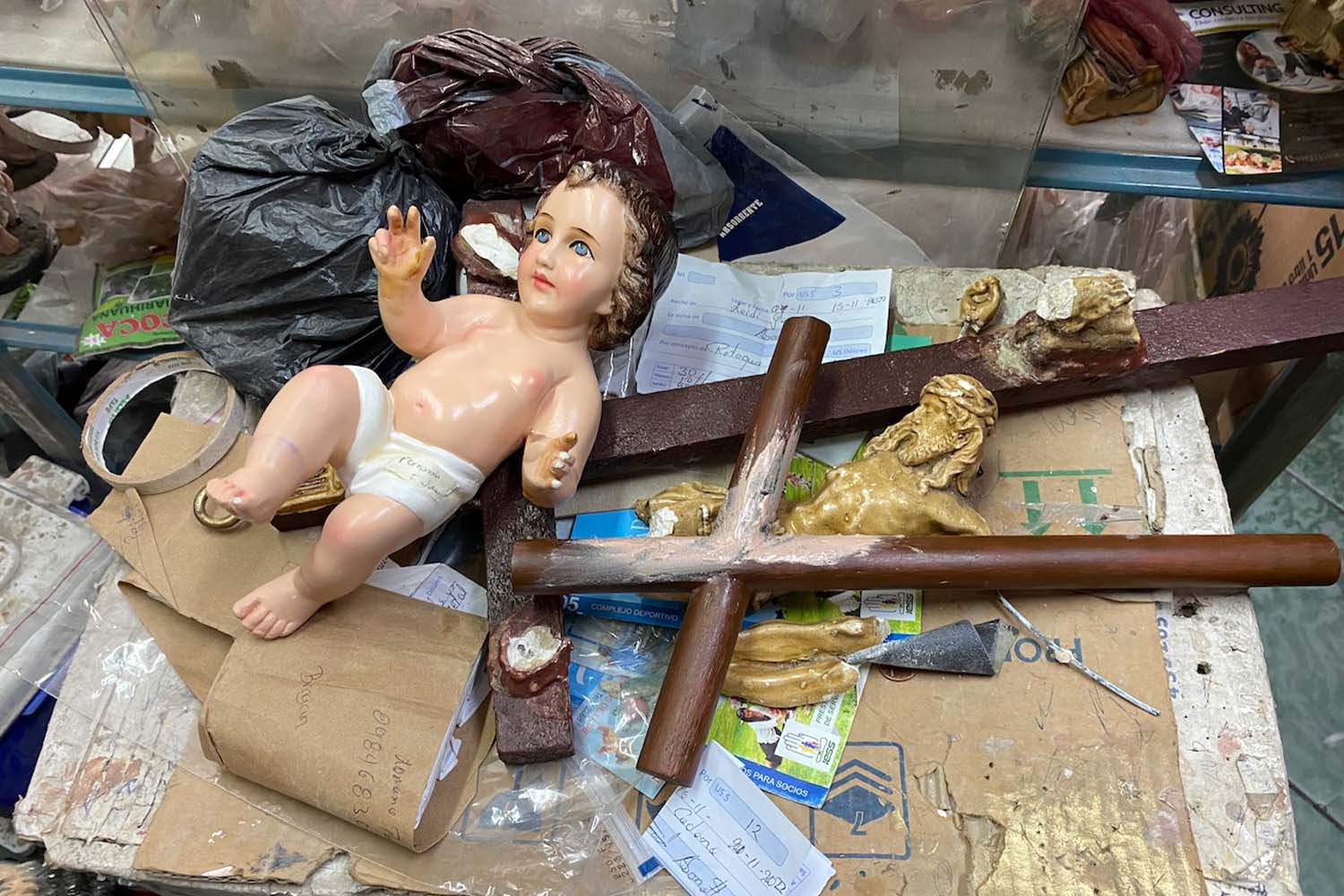
As a fourth-generation religious artist, Carrion has been restoring the chipped and shattered star of the Christmas season for 41 years. He works in a seemingly disorganized manner, using his always-handy collection of cans filled with blended paints and pots of orphaned plaster shards to melt and shape to heal the wounded statuary. He charges $30 per repairs (as the U.S. dollar is the official currency of Ecuador) and clearly has no shortage of work.
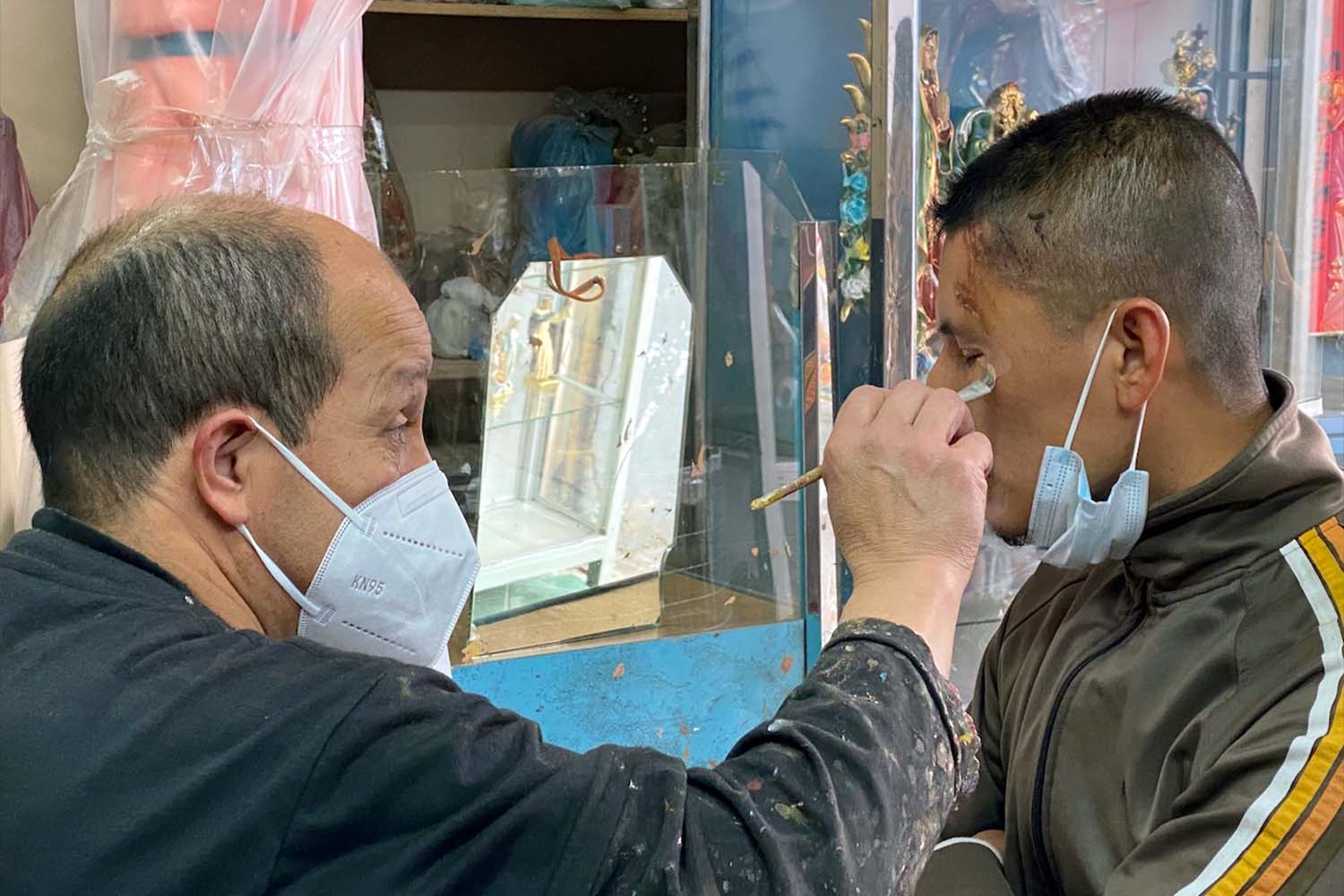
During my visit to Carrion’s shop, the artistic atmosphere is thrown off by the arrival of a young man with a face scarred by fresh cuts and abrasions. He explains a weekend traffic accident on the busy, narrow byways of Quito knocked him off his motorcycle. Rather than head to work that morning with a face telling the world of his motorized mishap, he asks the proprietor to take his various flesh tones and rigger brushes to conceal the wounds.
For $5, Carrion does exactly that. Within 10 minutes, the man’s perfectly painted complexion heads out onto the bustling Quito streets with a facial fix that the artist claims should last three or four days.
Sadly, Carrion’s shop is just one endangered stop amongst a growing number of small businesses and artisanal offerings facing the reality of closing once the current proprietor retires. His three daughters and one son took up other professions as none expressed an interest growing up learning his art form or running his shop once he must step down.
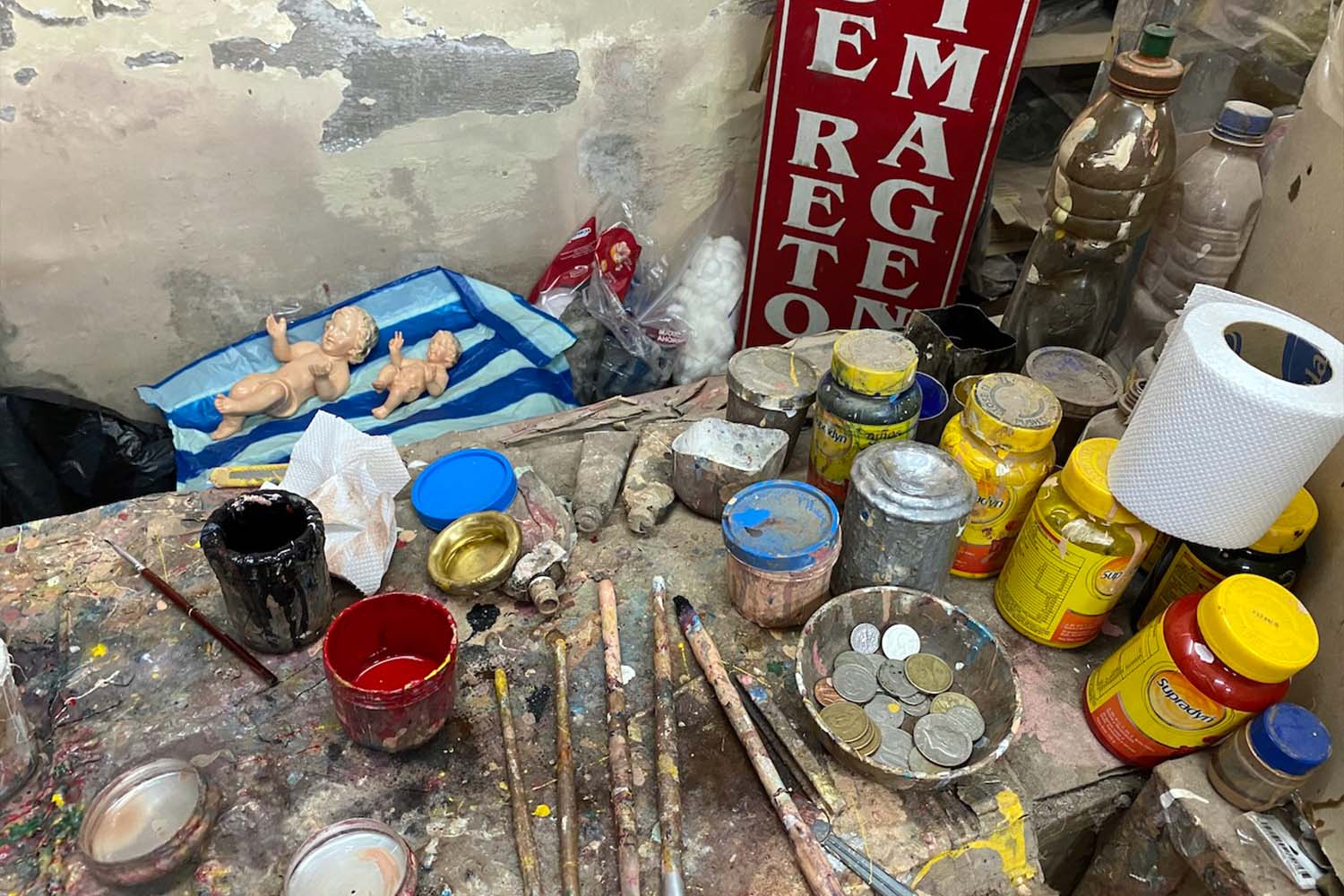
Local travel services and cultural organizations are now working to save these traditional services by calling attention to endangered skills and the businesses offering them, by bringing attention to their practitioners and recognizing their historic significance in the city. The official quest is on to save the crafts by ensuring replacements for the craftspeople.
Nearly 200 Years After Darwin, The Galápagos Remain One of the Wildest Vacations on Earth
Aboard a Japanese fishing boat-turned-expedition yacht, I got up close and personal with an array of rare birds, sharks, tortoises and moreMetropolitan Touring offers “Live Quito Like a Local” tours as trained guides take visitors through Old Town Quito, revealing these small entrepreneurial efforts on the hunt for a new generation of owners and operators. Andrea Schnoor, who serves as a spokesperson for Metropolitan Touring, says the company will double down on its efforts to bring attention to these rare and precious businesses in an effort to help keep them alive.
“For good measure, we are very close to announcing new bespoke tours,” Schnoor says. “We’re currently training more local guides to conduct these journeys on demand.”
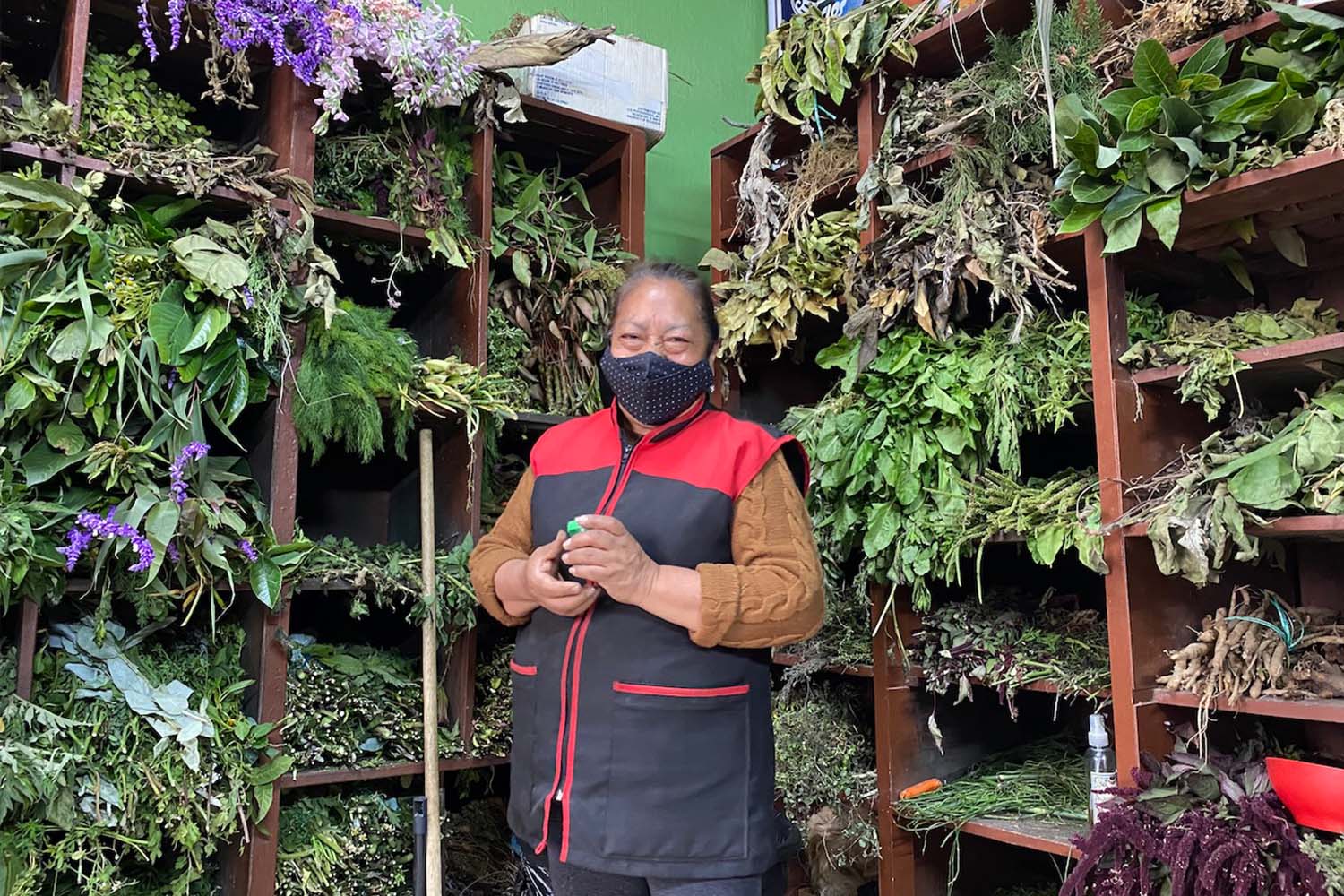
Emma Lagla, 67, works amongst shelves of cut flowers, herbs, roots and other fauna. She prepares and serves (by touch, smell and flagellation) Amazonian health concoctions from her shop, The Secret of the Plants.
Through the same interpreter, she describes the 43-year-old operation as a “colonial business meeting pre-colonial recipes.” Lagla claims there are few ailments what she calls “natural medicine” can’t cure. Occasionally, a touch of very legal cocaine and marijuana find their way into the arthritis cures.
“We treat the prostate, cholesterol, blood, mood, stress and immunity issues,” Lagla says.
Now 65, she has no shortage of locals coming to her for remedies, but she struggles to find students willing to benefit from her own 38 years of experience to carry on the service.
Around the corner, Rosa Gonzalez, 65, brews her organic, 25-ingredient Water of Life tea for the holistic health of the locals. For 38 years now, the rich and poor came to her tiny cafe every morning for a cleansing boost of energy. She’s been cooking up her tonic for 30 years, charging only $2 a cup. She’s one of the lucky ones as she now has a young woman behind the bar who learned the secret recipe.
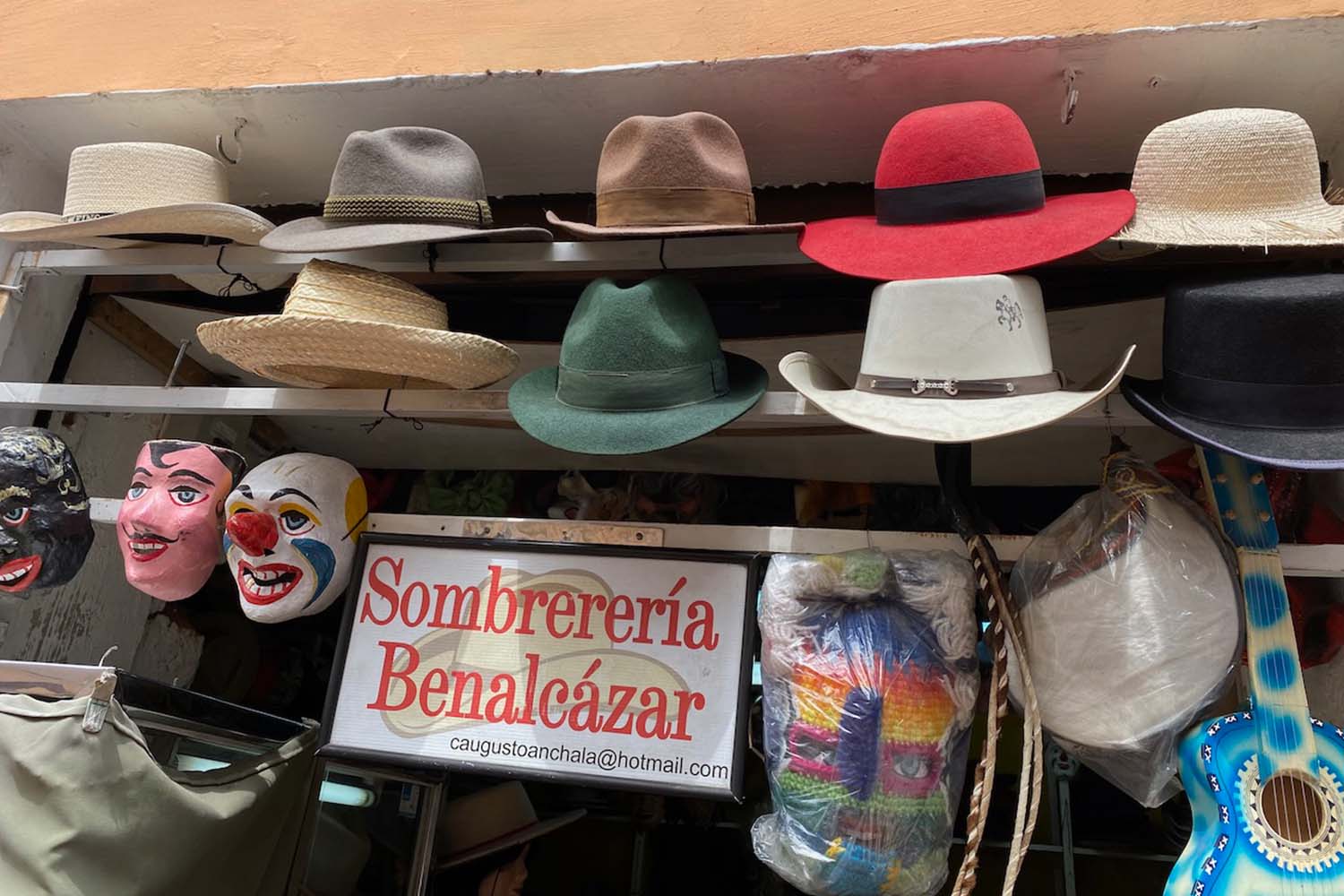
Finally, a 67-year-old woman and veteran hat maker — who demurred when asked to give her name — claims 43 years of experience making and selling everything from bespoke chapeaux and sombreros to seasonal ceremonial hats and (occasionally) even the traditional bowlers that transplanted Bolivian women wear as part of their indigenous daily dress.
She can cut, felt, shape, trim, starch and fit a hat for any visiting customer in less than a couple hours — complete with the maker’s mark of her thumbprint under the brim. All she asks is $40 and maybe a dozen roses from a nearby florist. (Roses are cheap in Quito.) Sadly, she also admits to finding young people disinterested in learning her millinery skillset or taking up jobs in the crafting trades.
Perhaps it’s a generational obsession with technology or an urge to leave Quito to explore a wider world, but the labor shortage remains common across the city. Efforts such as the Metropolitan Tours’ guided explorations do what they can to draw more interest in and out of Ecuador’s capital city.
“We’ll be expanding similar tours to the Ecuadorian city of Cuenca soon,” Schnoor adds. “Those tours will be fabulous and can be booked as of November.”
Back at Carrion’s workshop, the master puts the finishing touches on another creche denizen before moving to the next family’s precious porcelain infant. He continues to express worry over the future of the business.
“I still hope to find a willing apprentice from Ecuador or someplace else,” he says. “There will always be families who need their family’s sacred belongings fixed, and I won’t be here forever.”
This article appeared in an InsideHook newsletter. Sign up for free to get more on travel, wellness, style, drinking, and culture.
